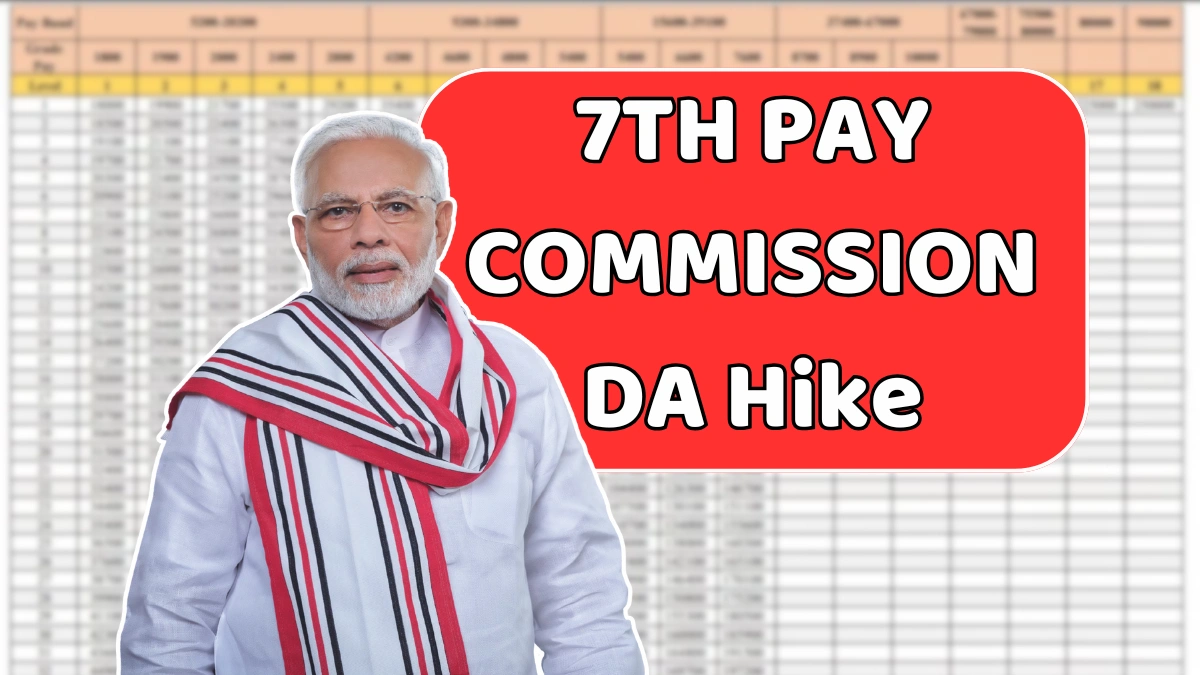Picture yourself at your government office, salary slip in hand — yet realizing that inflation has quietly eaten into your income. Groceries, rent, and fuel now cost more than what your paycheck can comfortably handle. This has been the growing frustration of over 50 lakh Central Government employees and 65 lakh pensioners across India.
But 2025 has brought long-awaited relief. With Dearness Allowance (DA) increases, House Rent Allowance (HRA) adjustments, and the announcement of the 8th Central Pay Commission, the year marks a new phase of recognition and financial stability for public sector workers navigating high inflation.
DA Hike: Breathing Room for Your Wallet
The Dearness Allowance (DA) — designed to offset inflation — has once again been raised, providing meaningful relief to employees and pensioners alike.
- New DA Rate: Increased by 2%, from 53% to 55% of basic pay, effective April 1, 2025.
- Beneficiaries: Over 1.1 crore employees and pensioners nationwide.
- Fiscal Impact: An additional ₹6,614 crore annually to the exchequer.
For example, a government employee with a basic salary of ₹20,000 now earns an additional ₹400–₹600 per month through this hike. Pensioners receive the same Dearness Relief (DR) rate, ensuring parity between serving and retired personnel.
The All India Consumer Price Index (AICPI) data hints at another 3% increase, likely pushing the DA to 58% by July 2025. States like Madhya Pradesh have already followed suit, announcing 3% hikes in July 2024 and 2% in January 2025.
This steady DA progression acts as a vital cushion against the rising cost of living, ensuring that government salaries remain in sync with economic realities.
HRA Revision: Making City Life Affordable
The House Rent Allowance (HRA) continues to play a crucial role for government employees working in urban areas. As per the 7th Pay Commission, HRA rates are structured based on city classification:
| City Class | HRA Rate |
|---|---|
| X (Metro Cities) | 27% of Basic Pay |
| Y (Large Cities) | 18% of Basic Pay |
| Z (Other Cities) | 9% of Basic Pay |
In 2025, the Tamil Nadu Government revised its HRA structure for employees across Grades I(A) to III, aligning with inflation and housing trends.
For instance, an employee in Delhi earning a basic salary of ₹50,000 now receives ₹13,500 as HRA — a meaningful contribution amid rising urban rents.
Nationwide, no uniform revision has yet been announced, but reports suggest that the 8th Pay Commission may bring an upward revision in HRA percentages to match current real estate costs.
It’s not about luxury — it’s about making city life livable and sustainable for India’s workforce.
Pension Reforms: Strengthening Retirement Security
For retired employees, 2025 marks a major upgrade in pension assurance. The Unified Pension Scheme (UPS), effective April 1, 2025, brings a fair and predictable system:
- Eligibility: Minimum 25 years of service.
- Pension Rate: 50% of last drawn pay, capped at ₹85,000 per month.
- Gratuity Ceiling: Increased to ₹25 lakh for BSNL/MTNL voluntary retirees.
- Minimum Pension: Continues at ₹9,000 per month, but expected to rise under the 8th CPC.
- Arrear Payments: In several states, arrears will be paid in five installments between June and October 2025.
This structured approach ensures long-serving employees retire with dignity, their income reflecting years of service to the nation.
House Building Advance: Easy Home Loans for Government Employees
Buying or constructing a home continues to be within reach for government staff, thanks to the House Building Advance (HBA) scheme, which remains unchanged for FY 2025–26.
- Interest Rate: 7.44% (fixed for 2025–26)
- Maximum Loan Amount: ₹25 lakh for home purchase or construction
- Sample EMI: A ₹20 lakh loan for 20 years results in an EMI of around ₹19,000 per month, far lower than most market rates.
This benefit, introduced under the 7th Pay Commission, remains one of the most employee-friendly housing loan schemes in India — helping families build or buy homes without long-term financial strain.
Pay Matrix Snapshot
| Pay Level | Entry Pay (₹) | Mid-Career (Index 20) | Peak (Index 40) |
|---|---|---|---|
| Level 1 | 18,000 | 56,900 | 1,80,400 |
| Level 5 | 29,200 | 92,300 | 2,92,200 |
| Level 10 | 56,100 | 1,77,500 | 5,62,600 |
| Level 15 | 1,00,000 | 3,16,600 | 10,05,900 |
These figures represent the structured progression of salaries across service levels — a cornerstone of transparency and consistency in government pay systems.
Relief, Recognition, and Reform
The 2025 pay and pension updates under the 7th Pay Commission reflect a strong commitment to employee welfare amid economic challenges. The DA hike, HRA stability, pension upgrades, and affordable home loan schemes collectively reinforce the government’s effort to balance fiscal prudence with social responsibility.
And with the 8th Pay Commission on the horizon, there’s renewed optimism among India’s government workforce — that their earnings, benefits, and retirements will continue to keep pace with a changing economy.
Disclaimer: This article is for informational purposes only. All figures and policies are based on verified government notifications and public statements as of 2025. For specific pay, pension, or loan-related queries, employees should consult their respective department circulars or finance offices.






